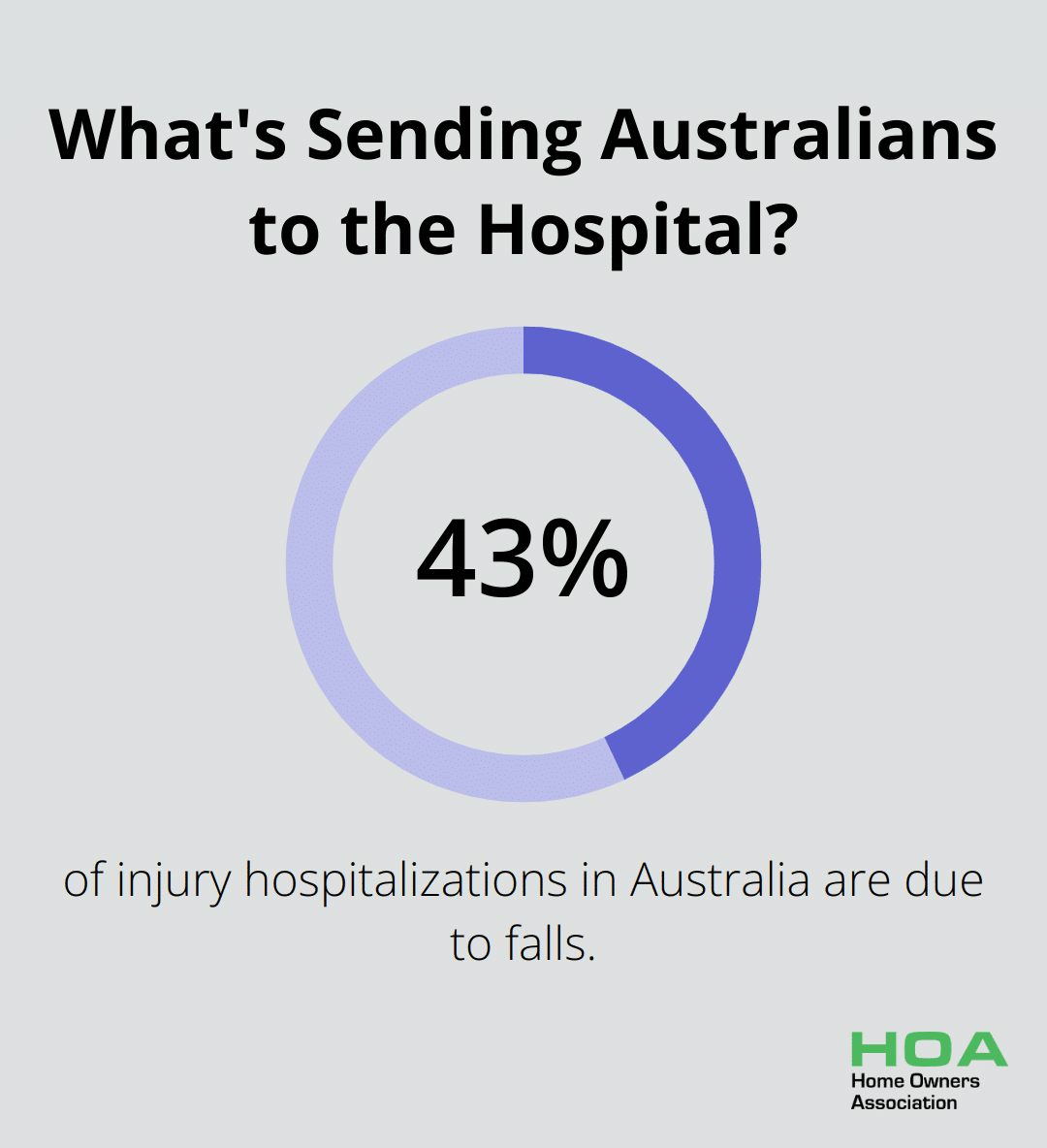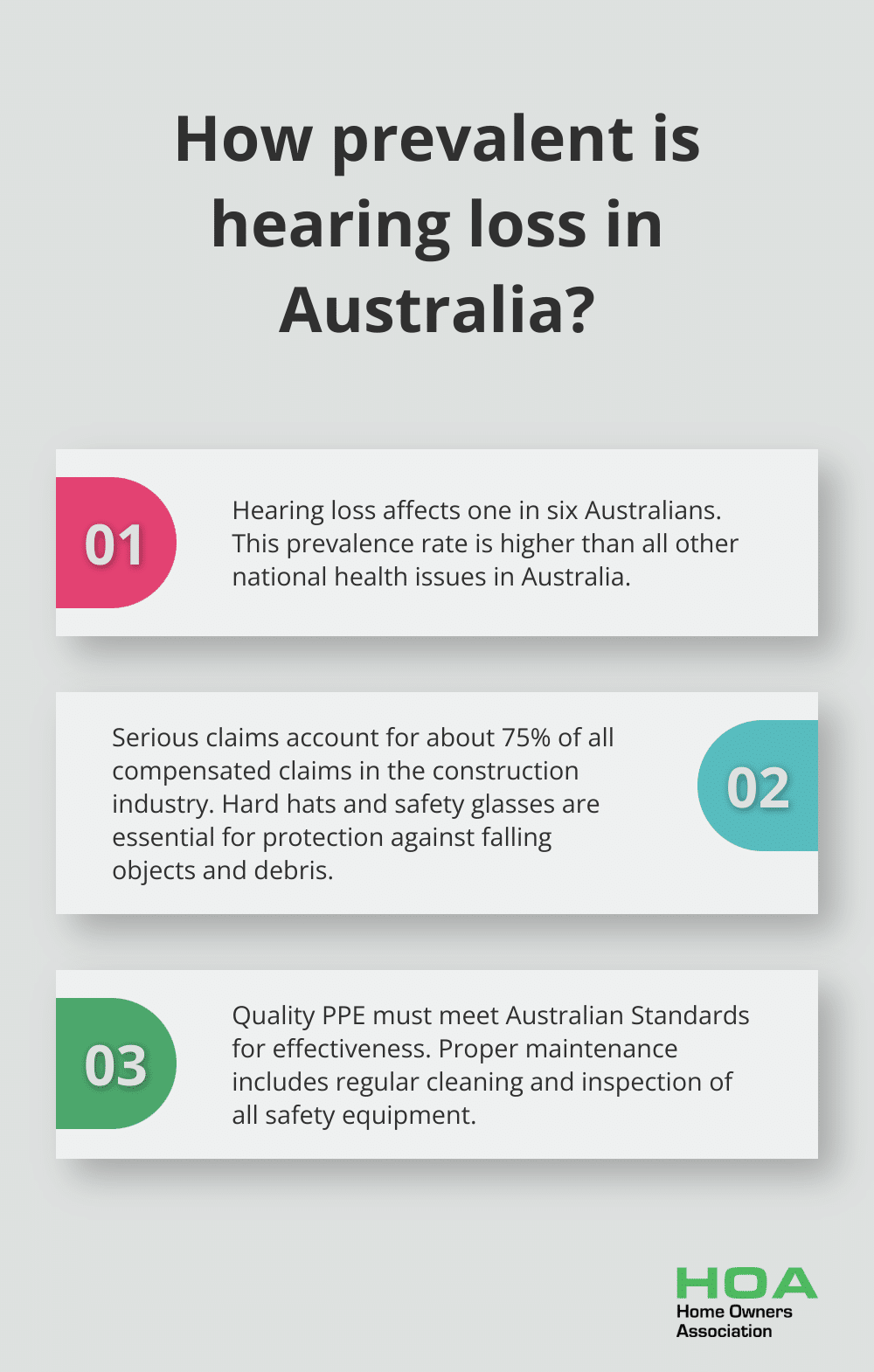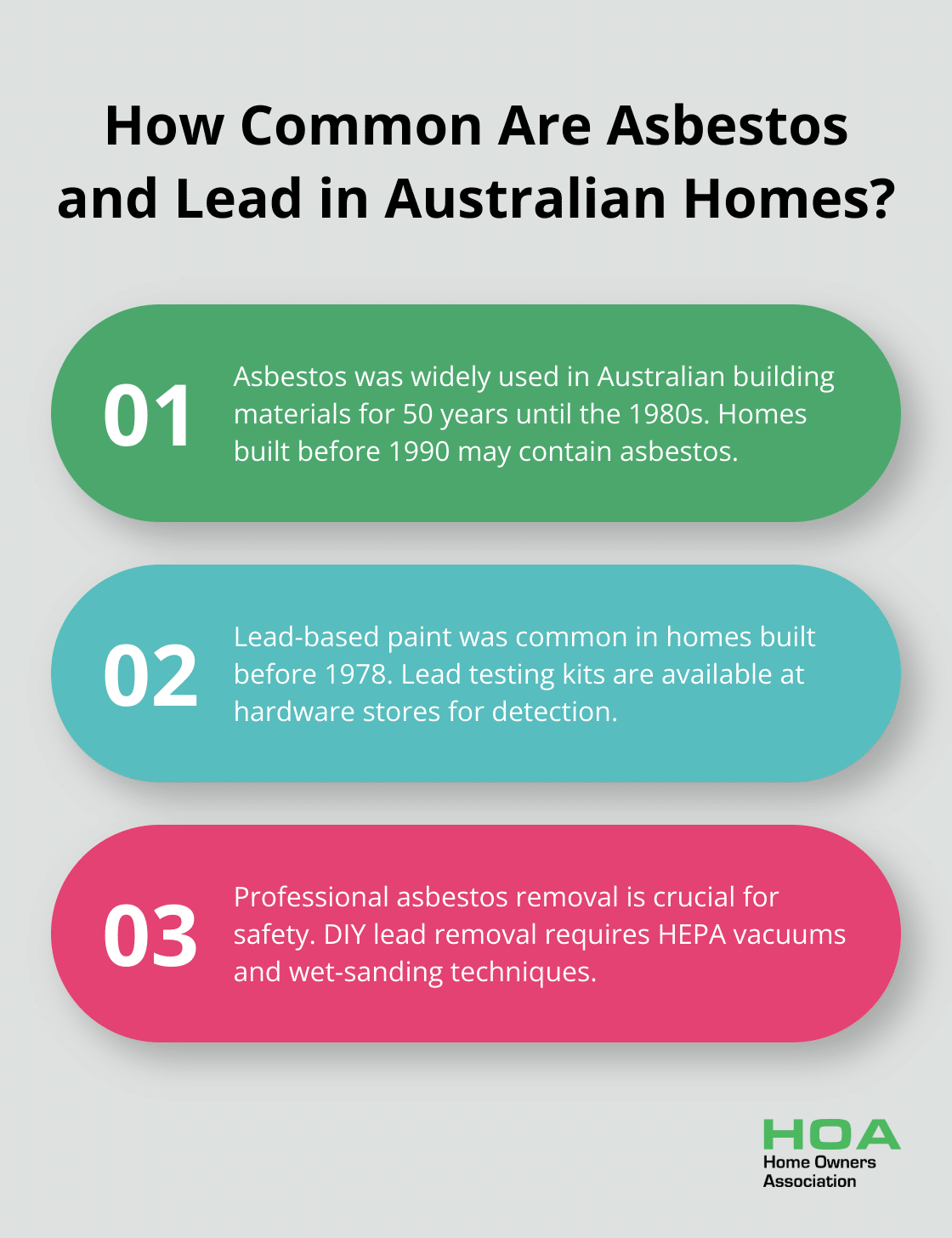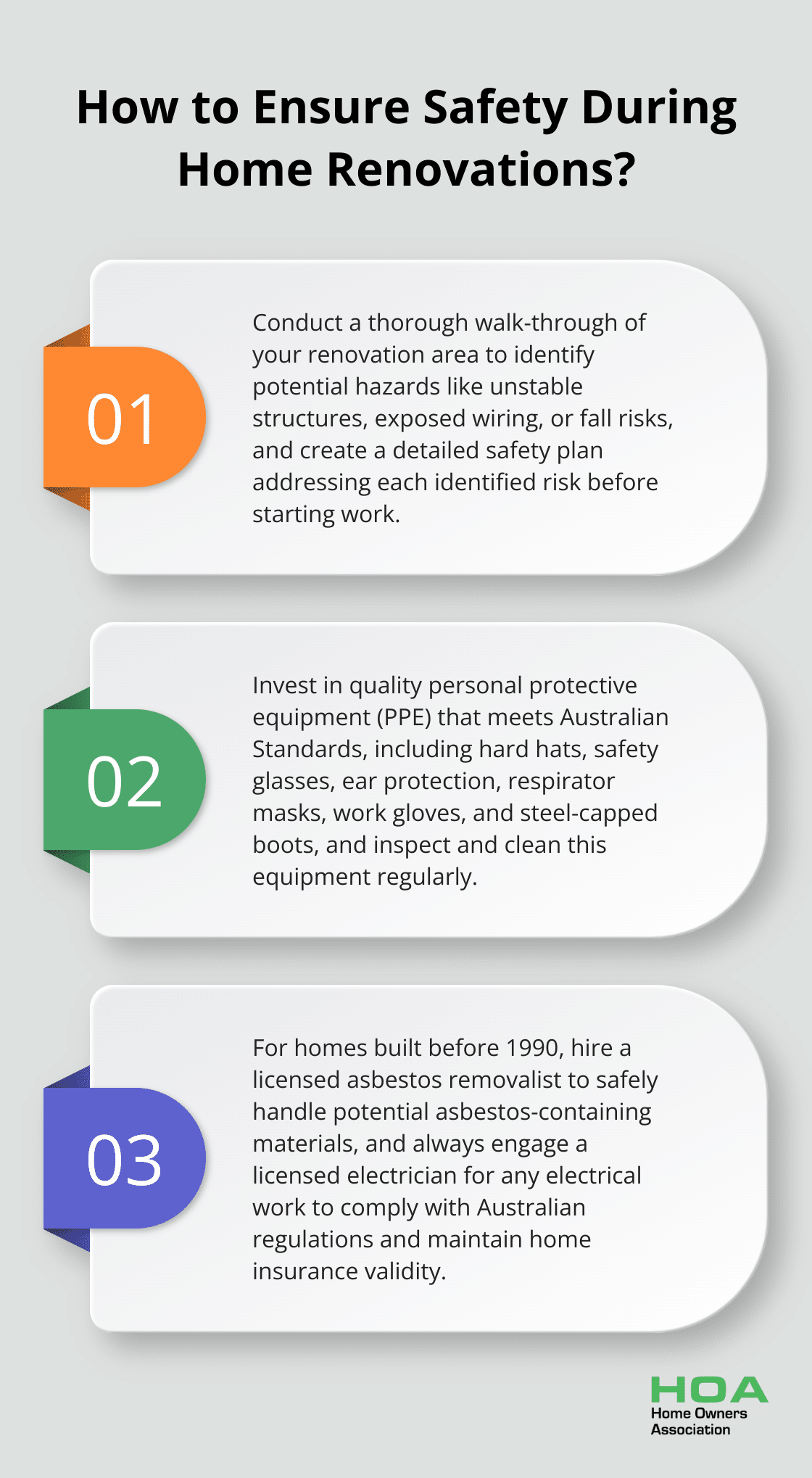
Home renovation projects can be exciting, but they also come with inherent risks. At Home Owners Association, we’ve seen firsthand the importance of prioritizing safety during these undertakings.
Our comprehensive guide to home renovation safety tips will help you navigate potential hazards and ensure a secure working environment. From proper planning to essential protective gear, we’ll cover everything you need to know to keep yourself and your loved ones safe throughout your renovation journey.
How to Plan for Safety in Home Renovations
Identify Potential Hazards
Before you start your renovation project, walk through the area and spot potential dangers. Look for unstable structures, exposed wiring, or areas where falls might occur. Falls represent 43% of injury hospitalizations in Australia. Early identification of these risks allows you to address them before work begins.
Create a Comprehensive Safety Plan
After you’ve identified the hazards, develop a detailed safety plan. This document should outline specific measures to address each risk and general safety protocols. Include emergency procedures, contact numbers for local medical facilities, and the location of first-aid kits. Safe Work Australia recommends putting an emergency plan in place before starting construction work.
Communicate Effectively
Your safety plan only works if everyone involved in the renovation knows about it. Hold a safety briefing with all workers, family members, and anyone else who might be on site. Ensure everyone understands their role in maintaining a safe environment. Post important safety information in visible locations around the work area.
Navigate Permits and Inspections
Obtaining proper permits isn’t just a legal requirement-it’s a crucial safety measure. Building codes exist to ensure structures are safe, and inspections help catch potential issues before they become dangerous. In Australia, requirements vary by state and territory, so check with your local council for specific regulations. (For example, in New South Wales, any structural work or projects valued over $20,000 require a permit.)
Prepare for the Unexpected
Even with the best planning, unexpected situations can arise. Set aside a contingency budget for safety-related expenses. Industry experts suggest allocating 10-20% of your total renovation budget for unforeseen costs (including those related to safety measures).

These steps will help protect you, your workers, and your investment. As you move forward with your renovation plans, it’s essential to consider the next critical aspect of safety: personal protective equipment (PPE). This gear forms your first line of defense against potential hazards on the job site.
What PPE Do You Need for Home Renovations?
Personal Protective Equipment (PPE) serves as your primary defense against potential hazards during home renovations. Let’s explore the essential safety gear you need for different renovation tasks.
Essential Safety Gear for Common Renovation Tasks
For general renovation work, a hard hat protects against falling objects. Serious claims by nature of injury or disease account for around three-quarters of all compensated claims in the construction industry. Safety glasses shield your eyes from dust and debris, complementing the protection offered by hard hats.

When you work with power tools or in noisy environments, use earplugs or earmuffs. Hearing loss affects one in six Australians, a prevalence rate that is higher than all other national health issues.
For tasks involving dust or chemicals, wear a respirator mask. The appropriate type depends on the specific hazard. For example, when you deal with asbestos, you need a P2 filter respirator at minimum.
Protect your hands and feet. Sturdy work gloves prevent cuts and abrasions, while steel-capped boots guard against heavy falling objects and punctures from nails or other sharp materials.
Proper Use and Maintenance of PPE
Owning PPE isn’t enough-you must use and maintain it correctly. Always inspect your gear before use. Look for cracks in hard hats, tears in gloves, or damage to respirator filters.
Clean your PPE regularly. For instance, wipe down safety glasses daily and wash hard hats with soap and water weekly. Replace disposable items like earplugs after each use.
Store your PPE properly when not in use. Keep it in a clean, dry place away from direct sunlight (which can degrade some materials over time).
Sourcing Quality Safety Equipment
Quality matters when it comes to PPE. Cheap, substandard equipment might not provide adequate protection. In Australia, look for PPE that meets Australian Standards. These standards ensure the equipment has been tested and certified for effectiveness.
Local hardware stores and safety equipment specialists offer good sources for PPE. Online retailers can offer competitive prices, but check reviews and certifications before purchasing.
Investing in proper PPE equates to investing in your health and safety. The cost of quality equipment pales in comparison to the potential cost of an injury (both in terms of medical expenses and lost work time).
As we move forward to the next section, we’ll explore how to manage common renovation hazards. Your PPE will play a vital role in keeping you safe as you navigate these potential risks.
How to Tackle Common Renovation Hazards
Asbestos and Lead-Based Materials
Asbestos and lead-based materials pose serious health risks if not handled correctly. In Australia, builders used asbestos widely in building materials for a solid 50-year period – right up until the 1980s. If your home predates 1990, it might contain asbestos.

Do not attempt to remove asbestos yourself. Hire a licensed asbestos removalist. These professionals have the training and equipment to safely remove and dispose of asbestos-containing materials. The cost of professional removal is minimal compared to the health risks of improper handling.
For lead-based paint (common in homes built before 1978), use a lead testing kit from hardware stores. If you detect lead, consider hiring a professional for removal or encapsulation. If you decide to handle it yourself, use a HEPA vacuum and wet-sanding techniques to minimize dust.
Electrical Safety
Electrical work ranks among the most dangerous aspects of home renovation. In Australia, DIY electrical work is illegal in most cases and will void your home insurance if anything is altered. Always hire a licensed electrician for any electrical modifications or installations.
Before you start any renovation work, turn off the power to the work area. Use a non-contact voltage tester to confirm that wires are not live. When you use power tools, inspect cords for damage and avoid using them in wet conditions.
Install ground fault circuit interrupters (GFCIs) in areas prone to moisture (such as kitchens and bathrooms). These devices can prevent electrocution by quickly shutting off power when they detect a ground fault.
Preventing Falls
Falls cause many injuries in home renovations. When you work at heights, use a sturdy ladder appropriate for the task. Follow the 4-to-1 rule: for every 4 feet of height, move the base 1 foot away from the wall. Always maintain three points of contact when climbing.
For work on roofs or elevated platforms, use fall protection equipment like safety harnesses. Ensure these are properly anchored to a stable structure. Clear the work area of trip hazards and use non-slip mats on slippery surfaces.
Handling Hazardous Chemicals
Many renovation products contain hazardous chemicals. Always read and follow the manufacturer’s instructions and safety data sheets. Store chemicals in their original containers in a well-ventilated area, away from heat sources.
When you use products like paint strippers or solvents, work in a well-ventilated area or use exhaust fans. Wear appropriate PPE, including chemical-resistant gloves and eye protection. Have a spill kit ready, including absorbent materials and proper disposal containers.
Safety isn’t just about following rules-it’s about creating a culture of caution and awareness throughout your renovation project. Address these common hazards head-on to significantly reduce the risk of accidents and injuries.
Final Thoughts
Home renovation safety tips are essential for protecting yourself and ensuring project success. We at Home Owners Association prioritize safety throughout the renovation journey, from initial planning to final touches. Proper precautions, including comprehensive safety plans and effective communication, form the foundation of a secure renovation environment.

Personal protective equipment acts as your primary defense against various renovation risks. Quality gear, when selected and maintained properly, significantly reduces injury chances. Managing common renovation hazards requires vigilance and expertise, often necessitating professional help for tasks like asbestos removal or electrical work.
We support you throughout your home improvement journey with expert advice and resources. Our knowledge base helps you navigate renovation complexities safely and confidently (including tips on permit acquisition and inspection processes). Take advantage of our support as you embark on your projects and transform your home with peace of mind.





